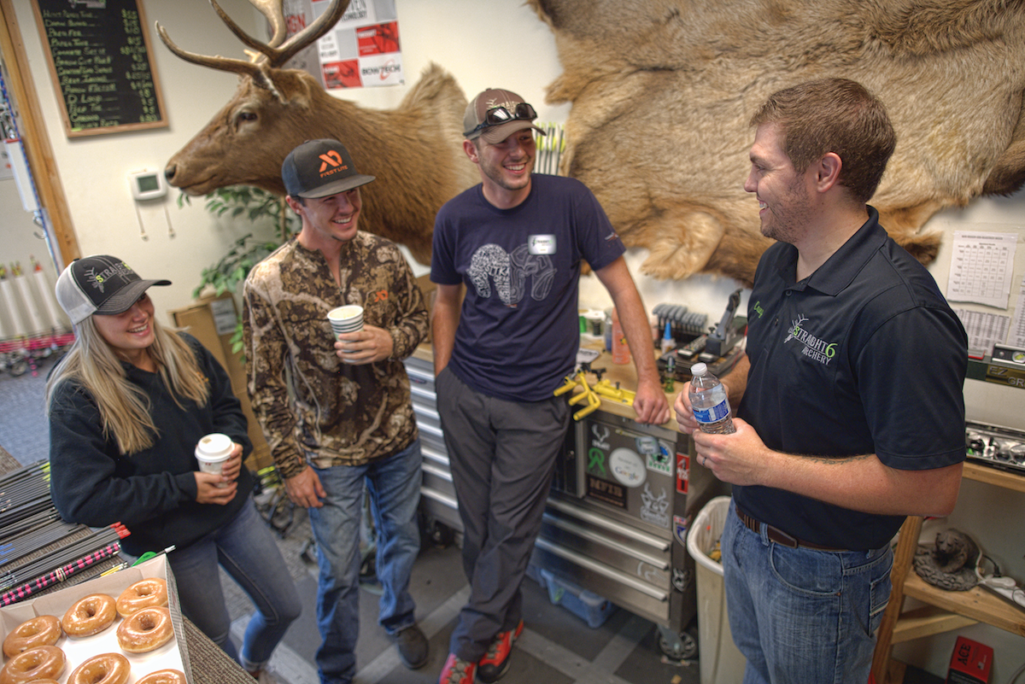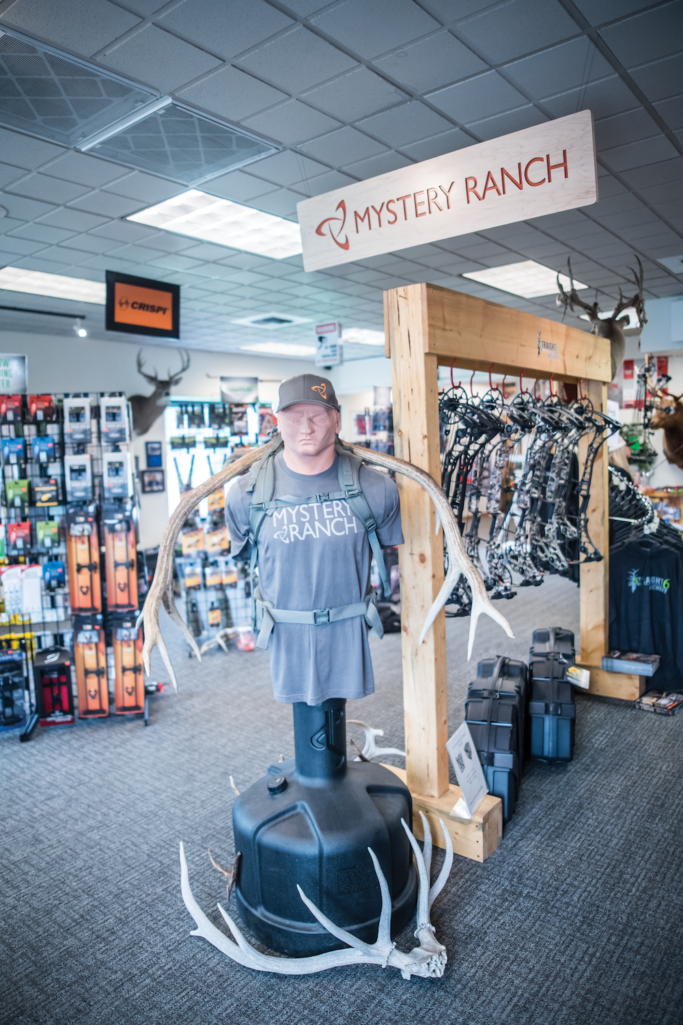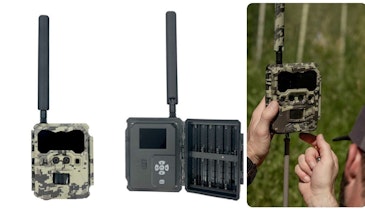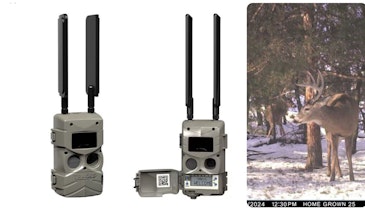So, you just got done with your fall hunt. Maybe you’re even reading this in the stand. You’ve spent hours thinking about your hunt and planning for it. You’ve already imagined that 10-point buck you’ve seen on your trail cameras posted on your Facebook page or plastered on the store wall. "Dream – Plan – Succeed." You do this for yourself, but not for your business. Why?
I know — it’s not fun. It’s certainly more complicated than getting ready for a hunt. But planning is required if you are going to move through 2018 and beyond. The faster the pace of change, the more prepared you must be to respond. I want to make this as painless as possible. The following are ideas to get you thinking about your business goals for 2018, actions to consider for each goal and, finally, a simple planning process to guide you. What will you accomplish in 2018?
Invest in Bowhunting Expertise
A majority of retailers started their businesses through a passion for bowhunting and likely have significant expertise already, especially in deer hunting. Yet I would argue there is always more that can be done to improve your knowledge. Become the real source for all things bowhunting. Here are some action items to expand your bowhunting expertise:
- Become more knowledgeable about additional species. How familiar are you and/or your staff with turkeys, elk, antelope, small game or even fish? What can you do to expand your knowledge on a species for which you are less familiar? What existing experts can you follow and/or read about (and then use that to market and expand participation by customers)?
- Improve your understanding of access issues in your area. What do you know about the public land available for hunting in the area? What species can be hunted there, and what is the approximate success rate for each? If public land isn’t available, how familiar are you with leases or guides so you can connect your customers to them?
- Follow and become deeply familiar with hunting regulations and changes. Do you stay current on the regulations that affect bowhunting? Do you participate in the process or understand how regulations are reviewed and adjusted each year? Actually understand and participate in the process, don’t just pass on opinions. What relationship do you have with the local conservation officer(s)? Is there anything your team can do to help solve any bowhunting-related issues?
- Develop additional partnerships. Have you considered any partnerships with local guides or taxidermists? Could you be getting a referral percentage? What about a local chef that’s embedded into the local foodie or “locavore” community?
- Provide additional bowhunting information to customers. What apps exist to improve bowhunting success in the area (mapping)? Have you downloaded those apps to your phone or tablet? What checklists or other materials can you provide to make planning a hunt effortless?
Increase Range Income
If you haven’t heard about the Retail Growth Initiative, you should look into it. There are significant resources available because the program was originally developed to improve range profits. A majority of the range profits experienced by participating retailers were in archery recruitment. However, there are opportunities for a strictly bowhunting store too. To consider this goal, you must first be able to separate your range income from other income. If you don’t have a system to do so, getting one will be your first action item under this goal. From adding or improving activities on your range to modifying your prices (archery should not be free unless other recreation is also free), here are some action items to grow your range income:
- Develop and adjust your class schedule. Where is there room on the schedule for additional classes? What types of classes should you offer?
- Develop event and workshop opportunities. What are some ways you can bring bowhunters together (sight-in days, wild game cook-offs, hunting workshops, calling seminars)? What about Explore Bowhunting and Explore Bowfishing as ways to move your archers into outdoor pursuits? Do you offer birthday parties, corporate events, coaching training or shooting workshops? Have you considered monthly fun shoots?
- Grow your staff and expertise in archery. Are your instructors certified? What continuing education opportunities exist so your staff can grow as much as your students?
- Check your pricing structure. Is the price of your classes in line with other recreation classes in the community? What is the market value of the events and/or workshops you offer? What can be adjusted to be more in line with rates for similar activities?
- Manage the range better. Do you have someone whose primary focus is range profits? What can you do to fully market the range to the right audiences for each activity offered? Is the range clean and organized at all times? What can be done on the walls to engage users to come more often (award boards, archery art displays from fun shoots, photos of recent events)? Is there a maintenance plan for targets and program equipment?

Expand Your Community Engagement
Community participation helps your business become more visible to its people. Networking with other businesses not only exposes them to you, but gives you an opportunity to share general business trends and work together to keep your community and its “main street” thriving. Here are action items to improve your community connections:
- Network with other business professionals. Have you joined the local Chamber of Commerce and participated in any of their events? Do you know what local tourism is doing to bring people into the community, and are there ways to tap into that? There are people in your community trying to keep business healthy, and you should get to know them.
- Develop community partnerships. How can you better partner with local archery clubs? Do they offer activities you cannot? What about parks and recreation departments that offer all kinds of recreation activities? Could archery be added to that? What other businesses would make great partners where you can support each other (like a bakery for birthday cakes, jeweler for archery jewelry or caterer for events)?
- Bring social groups together. What about hosting meetings or continuing education workshops for local archery instructors and coaches? Could you set up Facebook groups for any customer sectors, like bowhunters, Junior Olympic Archery Development team, instructors/coaches or wild game recipe exchange?
Understand Your Customers Better
Today’s customers expect a personalized experience. You probably know details about your dozen or so best customers, but what about the rest? They like to be called by name and want you to remember little details about them too (or even big ones, like the bow they last purchased even if it was 10 years ago). There should be systems in place to help you understand general trends. Finally, you may want a plan for obtaining and using feedback from customers. Here are action items to grow your customer intelligence:
- Improve customer data tracking. Do you have systems in place for real-time inventory, class and event management, and service management? Are analytics systems in place and regularly evaluated from email, social media and websites? Do you review this information on a regular basis and make adjustments to your marketing, inventory and programs accordingly?
- Gather more customer feedback. Do you check and respond to online reviews of your store? Do you conduct periodic surveys on customer needs? What plans are in place to observe and listen to customers free of assumptions and judgements? How are you using your customer feedback to make changes in the store?
- Understand customer journeys (all of the steps customers take to engage with you). Do you have more than one customer type (avid hunter, women, college-aged adventurer, foodie)? What have you done to understand how each interacts with you differently? Where along their journey with you do they hit the biggest pain point? What can you do to reduce their physical or digital effort to engage with you?
- Understand real drivers of purchase. Do you know what really brought customers to your store each day? Was it because they saw an advertisement, spoke with a friend about hunting or are being encouraged by a significant other? If you learn to ask a lot of why questions, you’ll probably get to the real “driver” and it won’t be “because I want a new bow.” Getting to “why” will give you better insights for running your business.
Upgrade Your Facility
Good businesses plan for major building maintenance and construction projects. They also consider smaller changes that make big impacts on their customers’ impressions of their shop. Judgements about you begin outside the store about the condition of your parking lot, signs and building (unless their real first experience with you was digital). Those perceptions continue as they enter and notice your organization style and cleanliness. Long before they interact with a person, they have begun to evaluate. Here are some action items to improve your physical presence:

- Clean and organize. Do you have storage issues to solve? Do you follow a regular cleaning schedule? Do you have a problem with clutter? What can you do to improve that spot that seems to be a dumping ground for everything?
- Develop a maintenance plan. What major repairs are needed or will be in the near future? What is your schedule and budget for these repairs? What maintenance must be done on current appliances and fixtures so they last longer?
- Improve the facility. Is there a renovation or expansion coming in the future for which you need to plan and budget? Would simple fixes like paint or new displays significantly improve your store’s aesthetic value? What can you do with existing product displays to make them more interactive?
Invest in Your People
I’ve heard it many times: “I can’t get or keep good help.” People are your biggest asset, so they are worthy of investment. Look at your processes and policies for ways they are holding your best back. Unfortunately, the first step is to look inside yourself as an owner/manager and determine what behaviors negatively affect staff and culture. People want to grow with you, especially if they’re as passionate about archery and bowhunting as you are, but you have to create the environment to do so. In addition to daily tasks, they should see your vision for the company and know where they fit. Here are some action items to improve your people assets and reduce employee churn:
- Clarify roles and responsibilities. Are your staff clear on their level of authority, especially in regards to providing the best customer service? Remember, great customer service is essential. Without it, your shop will struggle. Do you have clear position descriptions for new hires?
- Improve hiring and training processes. Do your hiring advertisements not only include expected tasks, but also describe company culture? Do your reward systems match your company strategy, and are they specifically outlined? Do you provide onboarding for new employees? Do you offer regular training or cross-training opportunities? Is your pay in line with or above the level of experience you require?
- Create a learning environment. What opportunities do employees have to learn or test new skills? What is the process for employees submitting new ideas? Do you have a budget for sending employees to training sessions and classes? How do you and other managers demonstrate that learning is ongoing?
Notice there is no mention of products. Your products can be purchased anywhere. Business is no longer about selling but developing relationships with customers and providing value and exceptional experiences. When you change your focus from selling to servicing customer needs, I’m certain you’ll find many simple modifications to keep customers coming back (and even bring in new ones).
Here's a simple planning process for a successful 2018:
- Brainstorm bigger goals.
- Pick your top three goals.
- For each goal, brainstorm what must be done to achieve the goal.
- Choose the top five action items under each goal.
- Document and then file for future use all goals and action items that didn’t make the cut.
- For each of the remaining 15 action items, set a deadline, assign responsibility and determine a measurable. (It could be something like the number of participants in a class or a document completed — whatever evidence that the action item was completed successfully.)
- Write each action item on the deadline date of a visible calendar.
- Review progress weekly, monthly and quarterly, and adjust accordingly.
Realize that no one expects you to do this all, nor do I think it’s possible. Some of it may not even properly exemplify your brand. This is meant to help you grasp the possibilities. Then you must strategize, plan and document for your goals to be reached. Even if you have the capacity to implement all of these goals, they’ll need to be prioritized. Without planning, there will be no direction for you or your staff and you’ll be “chasing squirrels.” Planning doesn’t have to be as complicated as it’s portrayed to be, but it is the most important thing you can do for your business to prosper. You spend time and energy planning your hunting season, why not take time to plan your business in the coming year?
Featured photo: John Hafner Photography






